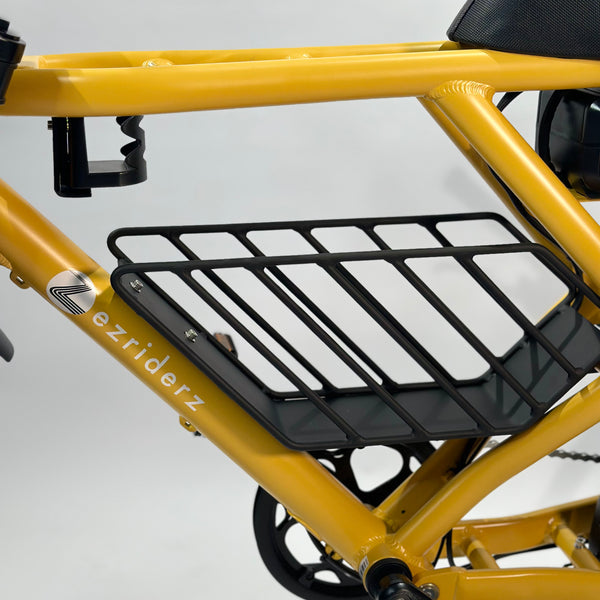Battery Safety & Tips
- FOLLOW THESE GUIDELINES FOR SAFE USE
1. **Charge with Manufacturer Approved Chargers:** Always use chargers provided by the manufacturer or approved replacements to ensure proper voltage and current levels during charging.
2. **Avoid Overcharging:** Never leave your e-bike battery charging unattended for extended periods, and always unplug it once fully charged (light turns green) to prevent overcharging, which can damage the battery.
3. **Keep in Cool, Dry Places:** Store and charge your e-bike battery in a cool, dry place away from direct sunlight, extreme temperatures and flammable materials, as exposure to heat can reduce battery life and cause thermal runaway. Never place your battery on a flammable surface such as a bed or carpet to charge.
4. **Inspect Regularly:** Check your battery regularly for any signs of damage, including leaks, swelling, or unusual odours. If you notice any abnormalities, stop using the battery immediately and contact a professional for guidance.
5. **Avoid Extreme Temperatures & Weather conditions:** Lithium-ion batteries perform best within a specific temperature range. Avoid exposing your e-bike battery to extreme cold or heat, as this can affect its performance and longevity, pose a risk of fire of explosion. Never expose your battery to water or moisture or allow it to get wet as water damage can cause safety issues.
6. **Use Proper Handling:** Handle your e-bike battery with care, avoiding dropping or subjecting it to physical impact, which can damage the internal components and lead to safety hazards.
7. **Follow Manufacturer Guidelines:** Adhere to the manufacturer's recommendations regarding charging frequency, storage conditions, and usage patterns to maximize battery life and safety.
8. **Replace Damaged Batteries and/or Chargers:** If your e-bike battery or charger becomes damaged or shows signs of deterioration, such as decreased capacity or voltage fluctuations, have it inspected by a professional immediately or dispose of it at a certified disposal place and replace it with a new one from Ezriderz or an approved manufacturer.
9. **Transport Safely:** When transporting your e-bike or spare batteries, ensure they are securely mounted and protected from impacts to prevent damage or short circuits.
10. **Dispose Properly:** Follow local regulations for the disposal of lithium-ion batteries. Many jurisdictions have specific guidelines for recycling or disposing of these batteries to minimize environmental impact and safety risks.
11. **Customisations:** Never attempt to customise your e-bike with components that are not genuine. Using electric parts that are not designed to be used in conjunction with each other can cause safety hazards
